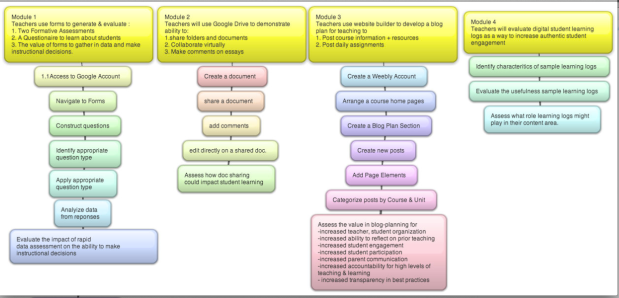LEARNER TASK MAP
Part 1: The learner task maps identifies the major steps participants will need to complete the activities outlined in this course. Click on the brainstorm image to see it full size.
Part 2:
Task-Objective Assessment Item Blueprint by Gillian Riley
Part II: Task Objective Assessment Item Blueprint
REVISION PROCESS
Laying the tasks helps the designer realize how just many steps are involved in each objective. Perhaps more importantly, misalignments become apparent. In constructing the Task Objective Blueprint, I could see how both my objectives and my activities were aligned. After spending a good amount of time with teachers, I realize they want something that’s applicable…tomorrow.
While the realization about what teachers want was heavy on my mind at the I set into design mode, the Task Objective Map helped me realize skills were embedded, but I wasn’t asking the most important questions: Why is this important to me? What benefit does this process produce for me and my students? How does the implementation effect my students or I long run? and If I do this, then what? The task objectives helped me extend my orignal activities to reach for more depth in the critical thinking process. In each course design, the Task-Objective Assessment Item Blueprint is the most helpful.
